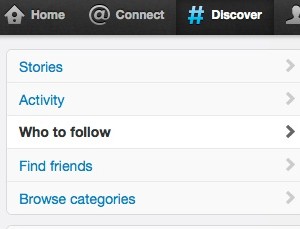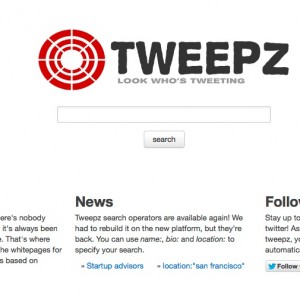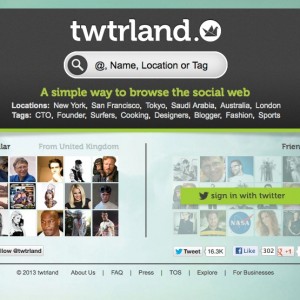Entries Tagged 'twitter' ↓
May 1st, 2013 — social media, social media training, twitter
On the face of it, Twitter should be the easiest thing in the world to use.
All you have to do is create a message that’s no longer than 140 characters and hit send. But, judging by some of the tweets I see, it obviously isn’t as easy to master as it appears.
Below are 10 reasons why you’re getting Twitter wrong and what you can do to make it better.
1. Batching
Tweeting frequency is often a problem for people. How often is too often?
A lot of people end up sending out a flurry of tweets all in one go (or batch) thinking if they get it over and done with they can get on with other stuff.
The problem with that is twofold: you’ll hack off your followers by filling their timeline with your inane ramblings and you run the risk of only reaching a very small percentage of your followers.
Not everyone will be using Twitter at the same time, so if you want to reach as many people as possible, spread your tweets out through the course of the day.
2. Room to RT
You see a lot of tweets go out with ‘Pls RT’ at the end (i.e. please re-tweet). That’s all well and good, but with only 140 characters to play with, if your message takes up all of them you’re not leaving your followers a lot of flexibility to RT.
If someone likes what you say, but then has to edit your tweet in order to be able to RT it, they probably won’t bother. Likewise, they may want to add a comment, but if there’s no room they won’t be able to.
3. Engage
If you want people to interact with you, you have to make your tweets engaging. But let’s get one thing straight, unless you happen to be a celebrity, it is unlikely you’ll get a flood of responses every time you tweet.
You’ll increase your chances though if your tweets are engaging.
4. Back to the RT
In number 2 I talked about re-tweeting and leaving room, well don’t forget that if you want people to RT you, you also need to RT other people.
When you see something of interest, RT it and share it with your followers. If you see someone asking for advice, RT it – unless you know the answer of course and then you should respond.
If you RT others, they are more likely to RT you in return.
5. Protection
On Facebook there are several levels of privacy you can use to protect yourself from unwanted prying eyes. Well, there is also a privacy setting available on Twitter, but if you are a business using the platform as a marketing tool, make sure you disable it.
Unlike Facebook, protecting your tweets makes you look very secretive. Why should someone have to ask to follow you? The whole point of Twitter is to be able to chat with anyone. Using the privacy setting would be like turning up to a networking event surrounded by an impenetrable wall of bodyguards.
Make yourself open and available to chat – if a follower really annoys you or sends abusive tweets you can always block and report them.
6. Follow me
One of the main headaches for anyone who is new to Twitter is how to get followers. Many people seem to have a hang up about following way more people than they have followers – well that’s where everyone starts.
The only way you can get your name out there is by following other people. Then if they like your stuff and RT it, their followers will see it, think ‘he/she’s great’ and will then follow you…and so it goes on.
So don’t get hung up by numbers.
7. Vague
If you have something to say, say it. Cryptic and vague tweets are annoying, pointless and frustrating.
That’s all I have to say on that one.
8. The difference between @ and .@
If you tweet about an article, blog or website and just use @, only the people who follow you and the site/person/article mention will see it. But if you use .@ everyone can follow it.
9. Think first
A tweet is for life (unless you delete it), but if it’s seen, well, you’re too late. That’s why you should never tweet in anger.
Always think very carefully about what you’re putting out there.
10. Chatty not sales
There’s nothing worse than having your twitter feed filled with spam tweets trying to sell stuff to you.
Tweet as though you were at a networking event. If all you do is tweet about your business with constant sales messages, you have become that person at the networking event everyone tries to avoid.
You’ve seen him, before he’s finished shaking your hand he’s thrust his business card and brochure in your other hand and told you all about his business and why you must buy from him. Then, without even asking you anything he wanders off to accost another victim.
But if you chat and engage with other tweeters, you’re the person who is naturally charismatic and draws people to them. The person who is more interested in who they’re speak to than themselves and who helps others and offers advice rather than sells.
I know who I’d rather be.
So there you go. That was a quick run through of what you’re doing wrong on Twitter and how you can make things right.
Remember, it is a social media platform that’s perfectly designed for conversation and engagement, so make sure that’s how you use it.
Author:
Sally Ormond is a professional copywriter and MD at Briar Copywriting Ltd. Working with a global client base, she also finds time to tweet – you can follow her here: @sallyormond.
April 22nd, 2013 — twitter
Most businesses seem hell bent on gathering as many Twitter followers as possible.
They seem to be concerned, when starting out, that their ‘following’ to ‘being followed’ ratio will look odd if the first number is greater than the second.
Well, for starters the only way to get people following you is to follow others, so this really shouldn’t be an issue.
But numbers are not the be all and end all of Twitter. Yes, we’ve all seen people (ordinary Joe’s, not super celebs) with tens of thousands of followers because they’ve followed one of those ‘how to get thousands of followers quickly’ blog posts.
Why?
It’s not impressive and all they’ve done is land themselves with a worthless Twitter stream of inane ramblings of people they’re not interest in.
It’s so much better to search out the people you want to follow and have a stream of interesting tweets from people you want to engage with.
But once you have your followers the next big hurdle is to get them to notice and engage with you.
The following 5 ideas will help you stand out, but it will take time and practice, no one becomes an overnight Twitter superstar – not even you.
1. Time zones
Your followers not only come from all over the country, but all over the world. They are all going to be using Twitter at different times of day, so if you have something important to say, say it once or twice at different times.
That doesn’t mean sending out the same tweets all day long, but once or twice at different times (only for the important stuff) is OK.
2. Talk
If you’re one of those people that sends out blanket tweets to everyone the chances are your engagement levels are zero.
If you want a particular influencer in your field to see what you’re saying, say it to them directly. Keep an eye on what they’re saying too and respond to them. Eventually, they will notice you and talk back.
3. Retweet
Having one of your tweets retweeted is a great feeling and will draw people’s attention to you.
If you have someone you particularly want to engage with, retweet his or her stuff (not everything, you’ll look like a stalker) if it resonates with you. They’ll start paying attention to you too.
4. Ask
Rather than just putting stuff out into the Twitterverse, start asking questions and advice. As a copywriter who works alone most of the time, I use Twitter as a knowledge bank. When I have a query about IT or need a recommendation for a service provider, I turn to my Twitter followers.
It gets you noticed and is a great way to start conversations with people.
5. Be consistent
When using Twitter it’s important to be consistent in what you put out if people are going to get a sense of your personality. If you always put out great information, retweet useful information and interact with other tweeters, you’ll start to build long-term and rewarding relationships with other people.
So you see, Twitter isn’t just about getting loads of followers. If you want to be effective you must get people to notice you.
April 10th, 2013 — twitter
3 tools to help Twitter work for you
Using Twitter for business is a great way to widen your reach. You can chat and build relationships with people who would previously have been ‘untouchable’. For example, there are loads of CEOs and powerful people on Twitter. If you tried to make contact with them through regular channels you’d probably hit a brick wall in the shape of their impassable PAs.
But with Twitter you can follow anyone and they can follow you.
So what’s the best way to get started once you’ve set up your account?
Firstly, I would suggest not using the auto-follow feature. It’s important your Twitter stream is full of stuff that’s relevant to you and just because someone wants to follow you doesn’t mean you necessarily want to follow him or her. So when you get a new follower take a look at their profile and Twitter feed, if it looks interesting follow them back, if not don’t.
Secondly, you need to target who you follow and that means proactively going out there and finding the people you need in your Twitterverse.
How do you do that?
Tracking down people to follow
1. Know your audience
Think about who it is you want to see your tweets. Who are your customers and key influencers?
For example, if you run a catering company you may be looking for hotels, wedding planners, associations, party planners, clubs etc. So stage one would be to start Googling for potential followers.
Once you have a list of companies and their websites, check to see if they’re on Twitter, if they are, follow them.
Not everyone will follow you back, but some will.
Your Twitterverse is growing.
2. Using search tools
There are several tools out there that can help you find followers, but for this post I shall concentrate on 3.
The first is Twitter itself. Not the most refined way of finding followers, but you can search through suggestions of who to follow and browse categories (based on your current followers):

Next is Tweepz, all you have to do is enter a keyword into the search box and you’ll get a list of potential people to follow. Then all you need to do is drill down that list to find the most relevant people and companies and follow them.

Finally, the third tool is twtrland. Again, after entering a keyword into the search box a list of search results are returned. Then you can filter these results by type – celebrity, power user, casual and novice, location, gender and estimated age.

But unlike the other search tools, this one offers much more information. So on top of the usual bio and image, you’ll also get information on the number of tweets they send per day (average), content breakdown, retweets etc.
3. What do you do next?
Once you have your followers it’s time to start interacting with them.
Notice the use of the word ‘interaction’ there? That means no blatant sales pitches, no harping on about how great you are every 5 minutes and no incessant chatter about ‘we did this’ or ‘we did that’.
You have to ‘listen’ to what others are saying and start a conversation with them. If they ask a question, respond and help them if you can. Yes, you can also send out links to your own blogs because they may be useful and it will also help widen your readership, but it’s important to remember that Twitter is a two-way channel.
4. Be responsive
Twitter is a real time social platform that means when people interact with you they expect you to respond reasonably quickly.
Checking your Twitter stream once a week isn’t going to work. If you have a smartphone download the Twitter app so you can be notified of any interactions that come your way.
There’s nothing worse than tweeting someone and not hearing from them for several days, or worse never hearing from them.
If you’re going to use Twitter you have to be committed. Only through chatting, posting and responding will you see results. It is a great business tool if used right, so make sure you take the time to hone your Twitter skills and make it work for you.
Sally Ormond – Copywriter, blogger, tweeter and MD at Briar Copywriting Ltd
March 6th, 2013 — social media, social media marketing, twitter
Do you use the hashtag in your social media marketing strategy? 
Do you even know what one is?
Well, according to Twitter, a hashtag is:
The # symbol, called a hashtag, is used to mark keywords or topics in a Tweet. It was created organically by Twitter users as a way to categorise messages.
But what happens when someone else uses the same hashtag as you, but for a completely different subject, or a competitor starts to use it?
Before you start getting carried away throwing random hashtags into the Twitter arena, you must first think about how to maximise its impact.
A recent post on Socialmediaexaminer runs through 4 tips to help you choose successful hashtags.
It covers everything from:
- Choosing something unique
- Choosing something that’s easy to remember
- Using the hashtag on multiple social media channels, to
- Searching for the hashtag before you use it
Read more about this subject by heading to How to Use Hashtags in Your Social Media Marketing
March 4th, 2013 — twitter
Normally I wouldn’t use this blog as a rant platform, but I just couldn’t help myself this time. 
As the title suggests I have a bugbear with Twitter. Well not the platform itself, I absolutely love that and the new ‘friends’ I’ve made through it.
My issue is with some of the users themselves.
Every morning I fire up my Mac and check my emails. Without fail there’s an email from Twitter listing all my new followers.
Now, I’m not an ‘automatic following’ kinda gal, instead I go through the list, check out their profiles and what they tweet about to see if they are my kind of people; the type I can engage with, learn from and generally have a bit of Twitter banter with.
Recently, I’ve noticed that several of my new followers have thousands upon thousands of followers themselves. My initial thought was ‘wow, someone with that many followers wants to follow me?’
As usual I check out their profile and look at their tweets to decide whether to follow back or not. If I don’t, it is not any reflection on them as a person, it’s just that their tweets aren’t relevant to me, perhaps they’ve not tweeted for a while, or they just appear to tweet about their business. Whatever the reason, it’s not personal.
But I’m now finding, more often than not, those with thousands of followers soon unfollow me when I don’t follow back (do you follow?). That suggests to me that they those Tweeters who are just in it for the numbers game, wanting to rack up as many followers as possible.
Why?
You can’t possibly keep track of everything that’s going on in your Twitterverse, or engage with your fellow tweeters, so what’s the point in trying to amass as many followers as possible?
It’s a mystery to me.
As far as I’m concerned, Twitter is all about relationships, camaraderie and good old-fashioned networking. It’s opened numerous doors to me that would have otherwise been closed purely because I’m engaging and posting useful information.
My hope is that people follow me because they like what I tweet about – yes there is the odd inane tweet that goes out about needing coffee etc., but on the whole I like to think that the information I share is of value.
So if you want a bit of banter, tips on copywriting and marketing, or just a connection you can tap for information now and then, I’m @sallyormond.
Rant over – normal service will resume with the next post.
Thanks for listening.











